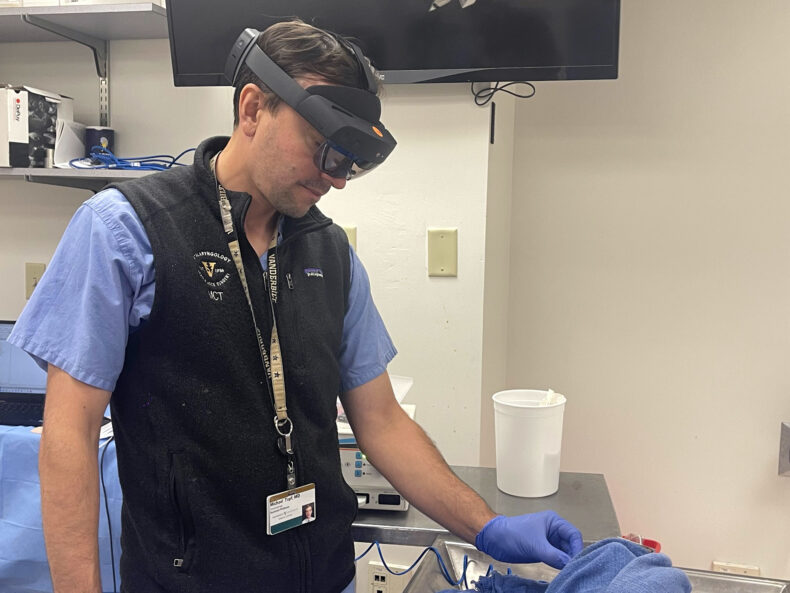
Vanderbilt Otolaryngology-Head and Neck Surgery has acquired an SP (single port) surgical robot that will help provide more targeted and accurate transoral robotic surgery (TORS) for patients with head and neck cancer.
The new robot features a single port with a flexible camera and three different surgical instruments, as well as an extra joint to provide increased mobility and precise access to patients’ oropharynxes — the back of the tongue, the soft palate, the back of the throat and the tonsils.

Kyle Mannion, MD, associate professor of Otolaryngology-Head and Neck Surgery, says the robot’s improved construction allows surgeons to bypass the rigid limits of a patient’s upper jaw, lower jaw and teeth for a greater range of motion in the robot’s instrument arms.
“The new SP robot will allow improved visualization and tissue manipulation to make the transoral robotic surgeries we already perform easier and more successful,” Mannion said. “TORS has become a well-accepted adaptation to the standard of care in just a few short years. Its true utility continues to evolve as the robots themselves evolve and our surgical experience continues to increase.”
This technology is particularly vital now, with the rate of human papillomavirus (HPV) related cancers rapidly growing.
Mannion says over the last century, nearly all the oropharynx base cancers VUMC Otolaryngology treated were related to smoking. In 2021, roughly 80% are HPV related.
Traditionally, throat cancers were treated with chemotherapy and radiation therapy, which are effective but associated with toxicity.
With the introduction of TORS, patients were able to benefit from targeted surgical resection of their tumors, with the same levels of success and the potential for reduced side effects later in life.

“These patients are typically younger and healthier than non-HPV associated oropharyngeal cancer patients,” said Michael Topf, MD, assistant professor of Otolaryngology-Head and Neck Surgery.
“If we’re able to perform robotic surgery, we may be able to spare the patient additional radiation dose or avoid radiation therapy all together. This is particularly important in patients who may live decades as head and neck cancer survivors,” Topf said.
Another benefit of TORS is its ability to be easily taught and learned, something that will be beneficial to Mannion and Topf as they train the next generation of otolaryngologists at VUMC.
“This surgical robot is a major advance for our patients with cancer,” said Eben Rosenthal, MD, incoming chair of Otolaryngology-Head and Neck Surgery. “Improvements in the platform will allow Dr. Topf and Dr. Mannion to more effectively remove head and neck cancers using minimally invasive approaches. The flexible arms on the new device will expand indications for use and reduce technical challenges of the procedures and optimize functional outcomes.”
“This robot gives an incomparable level of visualization of the tumor and oropharynx,” said Topf. “We’re really excited about being able to provide this technology to our patients.”

















